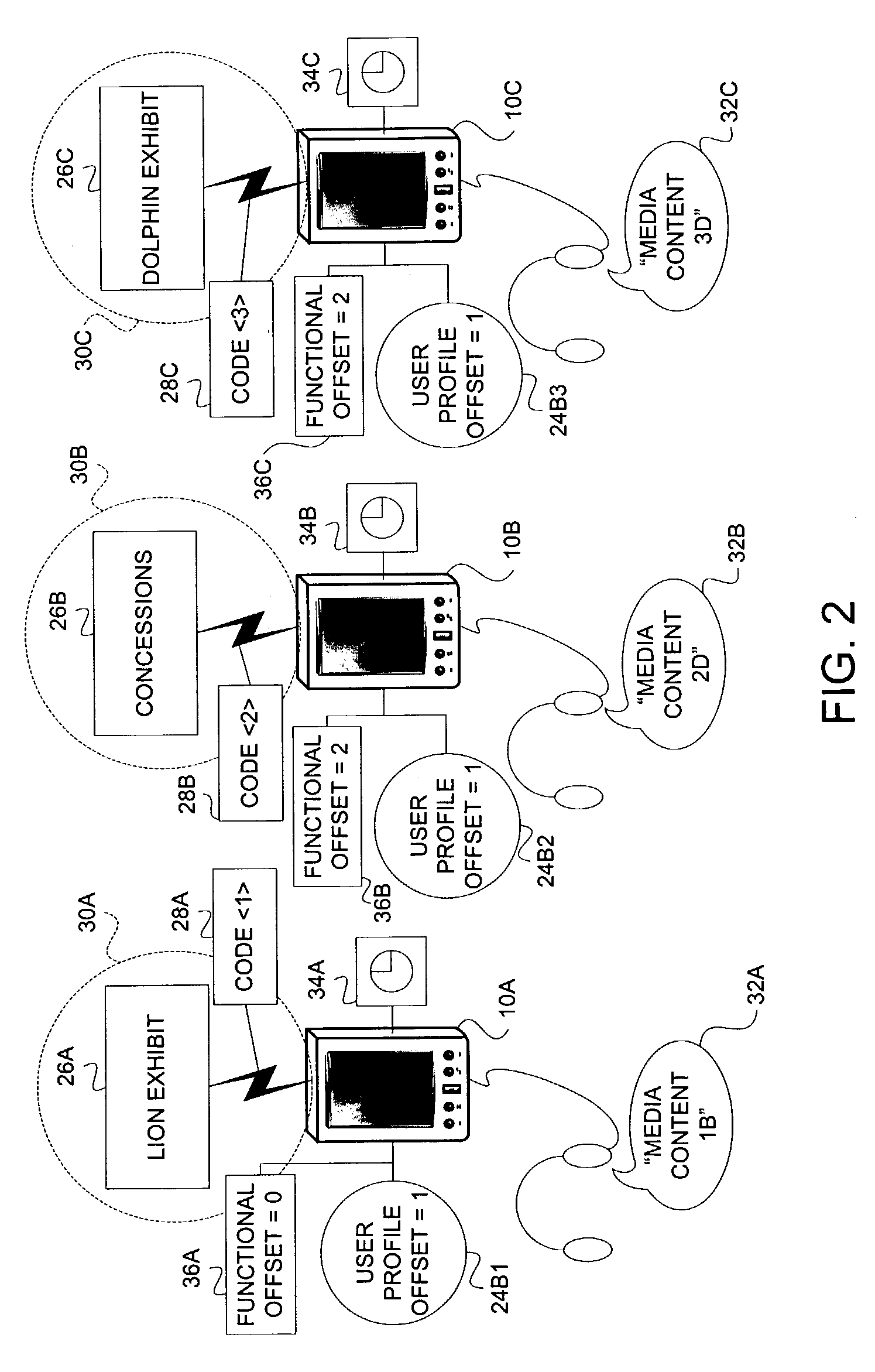System and method of media content distribution employing portable media content distribution device
- Summary
- Abstract
- Description
- Claims
- Application Information
AI Technical Summary
Benefits of technology
Problems solved by technology
Method used
Image
Examples
Embodiment Construction
[0014]The following description of the preferred embodiment(s) is merely exemplary in nature and is in no way intended to limit the invention, its application, or uses.
[0015]Portable device 10 of FIG. 1 is modeled on an MP3 player with an expanded interface and addition of a relatively short range (compared to a cell link) wireless data link (Bluetooth, radio frequency, etc.). It is subject to being programmed by input signals 12 provided by programming station 14 under operation by a device programmer. Alternatively, programming can be accomplished by wire. Accordingly, a device programmer supplies media content 16 relating to various locations corresponding to points of interest, and plural portions of media content relating to a particular point of interest may be authored with respect to different audiences, times of day, and / or events. According to various embodiments of the present invention, the device programmer can also supply a user profile selection 18 for a particular de...
PUM
 Login to View More
Login to View More Abstract
Description
Claims
Application Information
 Login to View More
Login to View More - R&D
- Intellectual Property
- Life Sciences
- Materials
- Tech Scout
- Unparalleled Data Quality
- Higher Quality Content
- 60% Fewer Hallucinations
Browse by: Latest US Patents, China's latest patents, Technical Efficacy Thesaurus, Application Domain, Technology Topic, Popular Technical Reports.
© 2025 PatSnap. All rights reserved.Legal|Privacy policy|Modern Slavery Act Transparency Statement|Sitemap|About US| Contact US: help@patsnap.com



